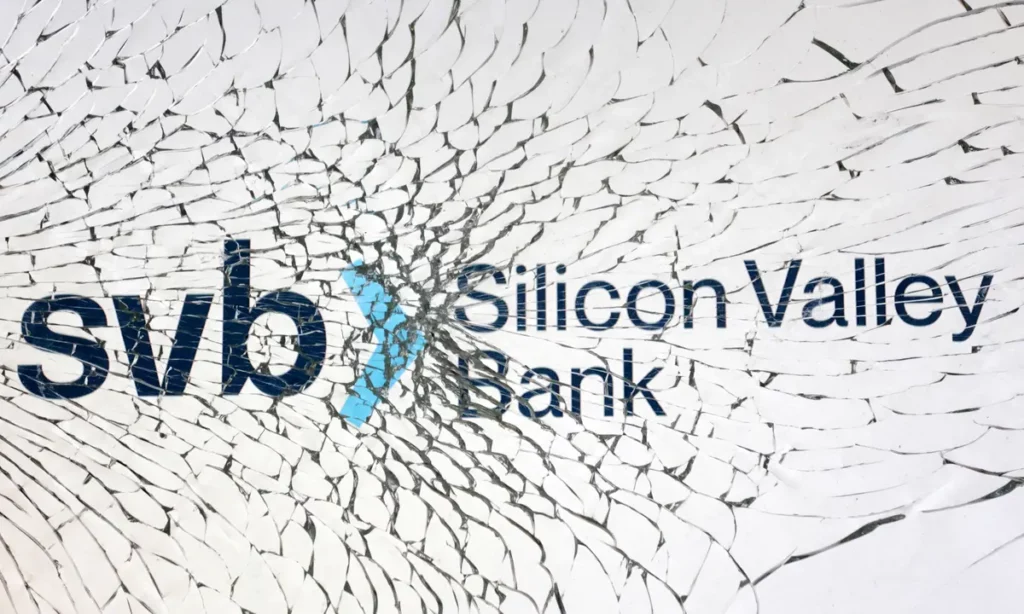What Happened With Silicon Valley Bank?
Written By: Shawn Perkins, CFP®, AWMA®

In light of what’s happening in today’s environment, I’m reminded of George Bailey’s Bailey Building and Loan in It’s a Wonderful Life. You may recall the scene where George is about to embark on his honeymoon, only to be pulled back to Bedford Falls because of a growing crowd of concerned customers wanting to pull their deposits. Through a desperate plea and negotiation, he and the team triumph and are able to keep Bailey Building and Loan afloat, but not without great cost to George. I’ll let you watch the movie to figure out the rest.
Over the past few days, Silicon Valley Bank and Signature Bank suffered the fate that George Bailey so narrowly avoided. These two banks collapsed which understandably sent tremendous concern throughout the financial system. To calm these fears and to stop the spread of further concern at other banks, the Federal Deposit Insurance Corporation, or FDIC, is making an effort to ensure that the depositors at Silicon Valley and Signature have access to 100% of their funds. I want to spend some time today revisiting FDIC insurance, but first I want to explain what happened to Silicon Valley Bank and why the spread should be contained.
In 2020 and 2021, Silicon Valley Bank benefited from tremendous growth. If you turn back your journal, you’ll remember that the world had been flipped upside down at this time from COVID-19. And, in response to the shock to the economy and financial markets, the Federal Reserve slashed interest rates to near 0% to promote easy access to credit. For a startup company in Silicon Valley, who better to turn to than – you guessed it – Silicon Valley Bank for this easy credit. Silicon Valley Bank flourished to say the least and with their tremendous amount of new money on hand, they purchased the ever-so-steady U.S. Treasury bond for safekeeping.
But then, the music stopped.
In 2022 inflation began to creep higher and higher and, in response, the Federal Reserve hiked interest rates in the most aggressive fashion in history. One key thing to always remember in the world of finance, when interest rates rise, asset prices fall. So, when tech startups began running out of money and came knocking on the door to Silicon Valley Bank, the bank needed to tap into their Treasury reserves to meet the withdrawal requests. But these bonds, as a result of interest rate hikes, had lost their value and the bank had no choice but to sell for much less than what they paid for them. As a last ditch effort to raise capital, the company planned to sell shares in the market, which cratered the stock price, which led to more panic and withdrawal requests, which brings us to where we are now.
While the reputation of the financial system still has a nasty scar from the 2008-2009 crisis, I believe the instability in this case is limited. Silicon Valley Bank did not diversify its customer business and instead chose to concentrate on the niche of risky startups. Major banks, including regional banks, generally diversify their businesses to spread out their risk and lower the chances of something like this happening. They also have extreme capital requirements, which were put in place after the financial crisis of 2008-2009 to limit the risk banks can take in the first place.
Now that that’s behind us, let’s take a moment to revisit the FDIC. In addition to being the four letters that you always see walking in and out of the door on your bank, their purpose is to restore public confidence that depositors have access to their funds in the event of a bank collapse, up to a certain limit. The FDIC insures up to $250,000 per depositor, per institution, per ownership category. In other words, if you have $300,000 at your bank in a checking account that’s just in your name, you will have $250,000 protected out of your $300,000. Now, if you had $250,000 at Bank 1 and $50,000 at Bank 2, your entire amount would be fully covered. What if you’re married or you have a joint account with another person? Then each depositor would have $250,000 for a total of $500,000 in coverage. It’s important to remember that there’s no distinction between checking and savings accounts at one bank. These accounts are lumped together based on the ownership category. In addition, it’s also important to remember what the FDIC does not cover: annuities, investment losses, life insurance policies, safety deposit boxes, etc. It also doesn’t cover investments in stocks, bonds, or mutual funds. That is where the Securities Investor Protection Corporation (SIPC) steps in and is a topic for a different day.
For now, keep calm and carry on. Talk to us about your cash positions and ways to protect it via different banks or account titling. We are eager to help.
If you have any questions, we’d love to chat! Call us at 844-CARLSON (844-227-5766) today!
Get on our email list to receive these updates in your inbox!
Ready to Take The Next Step?
For more information about any of the products and services listed here, schedule a free assessment today or register to attend a seminar.
